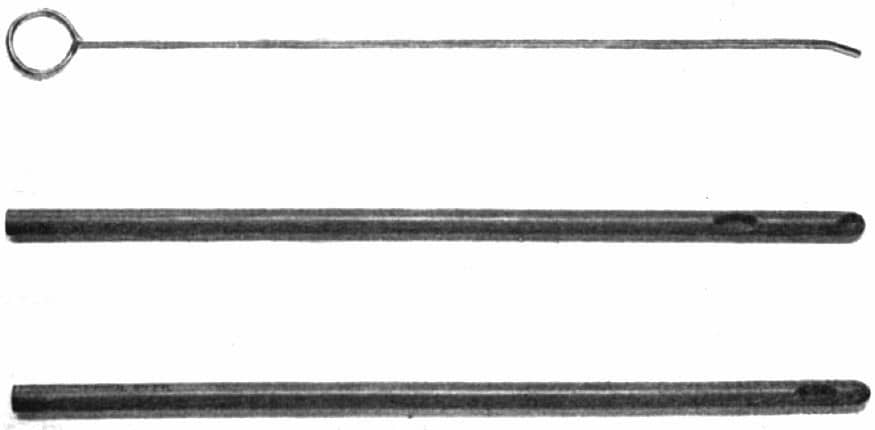Funtabulously Frivolous Friday Five 332
Just when you thought your brain could unwind on a Friday, you realise that it would rather be challenged with some good old fashioned medical trivia FFFF, introducing the Funtabulously Frivolous Friday Five 332
Question 1
In 1971 Martha McClintock published a paper in Nature based on her observation of women living together at Wellesley College. What did she discover?
Reveal the funtabulous answer
Menstrual Synchrony
McClintock studied 135 female college students and found that women who were paired with friends, roommates or groups of friends happened to synchronise. Hypothesising pheromones and that the group would synchronise to the strongest female character.
Thinking this was a great FFFF fact I was hoping this would be the end of the story but McClintock’s study has been replicated and improved multiple times. From these studies there appears to be just as many papers suggesting synchrony but also an equal number opposing the theory and calling it a myth.
Bedouin women in close family units have been studied proving and disproving the concept and also lesbian couples to add emphasis to the theory that closeness/friendship and intimacy help synchrony, again a study for and a study against this phenomenon. Equally along the way its been shown that women with anosmia definitely do not synchronise and that if there is close contact with men then the possibility of synchronisation is also lost.
Taking into account all the criticism to date on prior studies, Yang and Schank conducted the largest study to date in 2006 of 186 Chinese college women for over 1 year. They found that out of the 29 rooms with 4 to 8 women in, 9 of the groups converged their menstrual cycle but then diverged again. Given the variability in cycles ranging from 28 to 31 days they noted that statistically they would expect this phenomena to occur in 10 of the 29 groups and concluded there was no evidence for menstrual cycles.
So for now it appears to be a myth after 35 years of studies going back and forth. The biggest evolutionary argument against this phenomenon is it would not be advantageous to have competing females for the same male, at the same time.
References
- McClintock MK. Menstrual Synchrony and Suppression. Nature 1971;229:244-245
- Yang Z and Schank JC. Women do not synchronise their menstrual cycles. Hum Nat. 2006;17(4):433-47
Question 2
A 41 year old female presents in respiratory distress after developing dyspnea, tongue swelling, and difficulty speaking 1 hour prior to presentation. She denied prior angiotensin-converting enzyme inhibitor use, a family history of angioedema, previous occurrences of tongue swelling, and urticarial or hive symptoms. Home medications only included levothyroxine.
What is the diagnosis?
Reveal the funtabulous answer
Hypothyrodism-associated angioedema.
This case was taken from Benjamin Greiner et al who presented a case of angioedema in a patient with severe hypothyroidism. Reading the paper is chilling as upon intubation of this patient they found all of the airway to be swollen and the patient required a cricothyroidotomy (caution to those intubating someone in myxoedema coma).
Previous case reports have often mentioned the association of chronic urticaria, hypothyroidism and angioedema being a presenting feature of severe hypothyroidism. So a lesson for us all, consider hypothyroidism in those presenting with an unknown source of angioedema.
References
- Greiner B, Pelton J, Baker D. Hypothyroidism-associated angioedema. Proc (Bayl Univ Med Cent). 2020 Feb 12;33(2):254-255
Question 3
Leading on from the above question, which trauma-related drug can be administered to a patient with bradykinin-mediated angioedema.
Reveal the funtabulous answer
Tranexamic acid (TXA)
The explanation below is a summary from the excellent post on PulmCrit by Josh Farkas, I’d encourage everyone to read more.
Firstly bradykinin causes tissue swelling i.e. the angioedema we end up staring at in our resus bay.
The ultimate pathway for bradykinin release resembles something like the clotting cascade and, like the clotting cascade has multiple points in which it can be amplified or inhibited:
- ACE inhibitors stop the degradation of bradykinin.
- tPA increases plasminogen which is at the top of the cascade.
- Hereditary C1 esterase inhibitor deficiency. This stops the cascade higher up at the Prekallikrein and Kallikrein level (see diagram)
- Congenital abnormalities in factor XII can lead to excess bradykinin.
Regardless of the precise cause, it’s likely that the spiral of enzyme activation is the same (involving plasmin, XIIa, and kallekrine as shown above). This would imply that universal treatments could be effective for all types of bradykinin-mediated angioedema, regardless of the specific cause.
One example of this phenomenon is the utility of tranexamic acid to prevent angioedema episodes in patients with congenital C1-inhibitor deficiency. The underlying cause of angioedema in these patients has nothing to do with plasminogen or fibrinolysis. However, plasmin is required for the amplification spiral. Therefore, tranexamic acid can help these patients – even though it has a molecular effect on a different target. Essentially, bradykinin-induced angioedema involves the generation of an auto-amplification circuit. Breaking this circuit anywhere will work, regardless of where the circuit is interrupted.
Josh Farkas 2019
Question 4
Is it dangerous to think? Could your thoughts cause a life threatening condition?
Reveal the funtabulous answer
Fortunately for most, no.
However, researchers in Japan published a report called: Reflex Epilepsy Induced by Calculations Using a Soroban (算盤, そろばん, abacus). They describe a young man in college at music club who truly suffered for his art. Writing musical scores induced a generalised tonic-clonic seizure and in his final year he also discovered using the soroban induced the same problem.
Wilkin et al also produced a paper of a man who developed seizures only when doing multiplication or division but addition and subtraction was safe. These individuals take not doing your homework to the next level, no “my dog ate my work” shenanigans.
References
- Yamamoto J, Egawa I, Yamamoto S, Shimizu A. Reflex epilepsy induced by calculation using a “Soroban,” a Japanese traditional calculator. Epilepsia. 1991; 32(1): 39-43.
- Wilkins AJ, Zifkin B, Andermann F, McGovern E. Seizures induced by thinking. Ann Neurol. 1982; 11(6): 608-162
Question 5
We’ve all heard of Murphy’s law and Murphy’s sign…but what is Murphy’s eye?
Reveal the funtabulous answer
The second hole on the end of the endotracheal tube (ETT)
Francis John Murphy (1900 – 1972) was an American anaesthetist. In 1940 Murphy became dissatisfied with the endotracheal tubes he was using and began to consider the characteristics of the ideal endotracheal tube and designing them. He adapted many features but he’s remembered for the Murphy Eye, an important safety feature. This secondary hole allows another passage for oxygen flow if the distal end of the ETT becomes occluded.
Murphy determined that the ideal intratracheal catheter should possess certain characteristics which may be listed as follows:
- (a) Sufficient flexibility to accommodate itself to the pharynx and larynx.
- (b) Sufficient elasticity to prevent irritation to the parts through which it passes.
- (c) Sufficient body to resist the compression to which it would ordinarily be subjected when in use.
- (d) Resistance to kinking when bent at a moderately acute angle.
- (e) Ease of sterilization, (preferably by heat).
- (f) Durability in spite of repeated sterilizations.
- (g) Ease of insertion.
- (h) Adequate diameter of lumen in relation to outside diameter
- (i) Availability in a sufficient range of sizes.

In addition to the eyes at the end of the tube, there are two other lateral eyes. Thus the total area of the openings in the end of the tube is much greater than the cross section of the lumen. This is of importance because should one or more of the eyes become obstructed with mucus, breathing is still not embarrassed…These catheters have been used by the author for several hundred cases, and have been found entirely satisfactory wherever the intratracheal method has been indicated.
Murphy 1941
…and Finally


FFFF
Funtabulously Frivolous Friday Five
Dr Neil Long BMBS FACEM FRCEM FRCPC. Emergency Physician at Kelowna hospital, British Columbia. Loves the misery of alpine climbing and working in austere environments (namely tertiary trauma centres). Supporter of FOAMed, lifelong education and trying to find that elusive peak performance.

